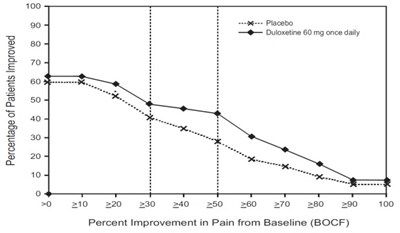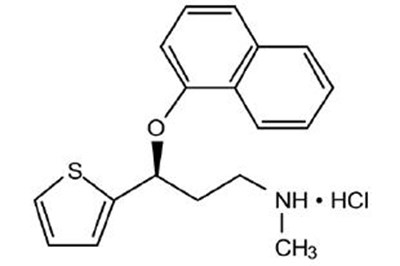Product Images Duloxetine Hydrochloride
View Photos of Packaging, Labels & Appearance
- duloxetine-20mg.jpg - duloxetine 20mg
- duloxetine-30mg.jpg - duloxetine 30mg
- duloxetine-60mg.jpg - duloxetine 60mg
- duloxetine fig1
- duloxetine fig10
- Figure 2 - duloxetine fig2
- duloxetine fig3
- duloxetine fig4
- duloxetine fig5
- duloxetine fig6
- duloxetine fig8
- duloxetine fig9
- duloxetine-structure - duloxetine structure
Product Label Images
The following 13 images provide visual information about the product associated with Duloxetine Hydrochloride NDC 46708-278 by Alembic Pharmaceuticals Limited, such as packaging, labeling, and the appearance of the drug itself. This resource could be helpful for medical professionals, pharmacists, and patients seeking to verify medication information and ensure they have the correct product.
duloxetine-30mg.jpg - duloxetine 30mg
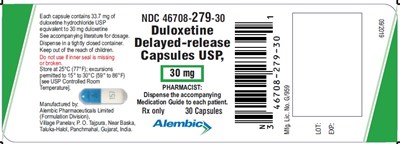
Each capsule of this medication contains 337 mg of duloxetine hydrochloride, which is equivalent to 30 mg of duloxetine. The dosage information can be found in the accompanying literature. It is important to keep the medication in a tightly closed container and out of reach of children. If the inner seal is broken, the medication should not be used. The medication should be stored at a temperature of 25°C (77°F) with excursions allowed between 15° to 30°C (59° to 86°F). This medication is manufactured by Alembic Pharmaceuticals Limited in India and labeled with NDC 46708-279-30. The medication guide should be dispensed to each patient with this medication.*
duloxetine fig1
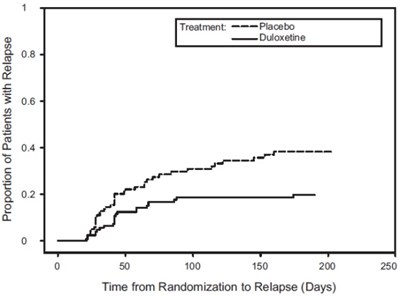
The text is displaying the results of a clinical trial, comparing a placebo to a drug called Duloxetine. The graph shows the time from randomization to relapse in days, with increasing doses of Duloxetine along the x-axis. There is no further information available.*
duloxetine fig10
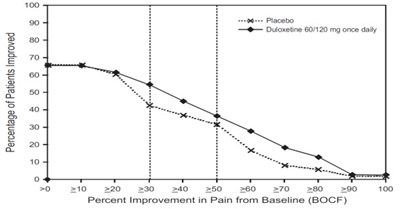
The text shows a graph depicting the percentage of patients who improved using a placebo versus Duloxetine, a medication taken at 60-120 mg once daily. The graph shows that Duloxetine had a rate of improvement of 2.2%, and the X-axis represents the percent improvement in pain from baseline data.*
Figure 2 - duloxetine fig2
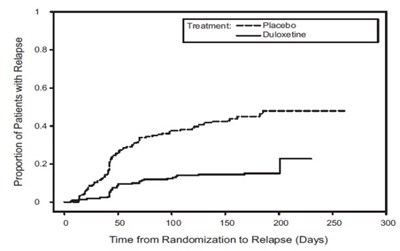
The text represents a chart that displays the proportion of patients who experienced a relapse. The chart compares two treatments, placebo and Duloxetine. The x-axis shows the time from randomization to relapse in days, and the y-axis shows the proportion of patients. The chart has five bars representing relapse rates of 2%, 4%, 6%, and 8%. There is also a line marked as "pm" on the chart with a scale on the right that ranges from 50 to 300. Any additional information is not available due to incomplete data.*
duloxetine fig3
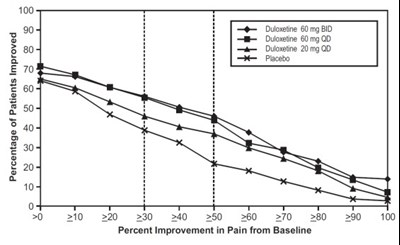
This is a table showing the different dosages of medication prescribed (Duweine and Duloseine). At the bottom, there is a graph depicting percentage improvement in pain from the baseline with increments of 10 displayed on the x-axis. The y-axis is the percentage of patients improved. The text is essentially a chart and therefore provides limited information.*
duloxetine fig8
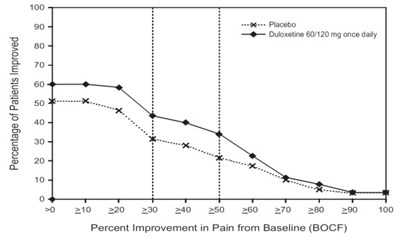
This is a chart that displays the percentage of patients' improvement in pain from their baseline condition. It compares the results between a Placebo group and a Duloxetine group, where the latter received 60-120 mg of medication once daily. The x-axis shows the range of percent improvement from 210 to 290, while the y-axis shows the number of patients.*
* The product label images have been analyzed using a combination of traditional computing and machine learning techniques. It should be noted that the descriptions provided may not be entirely accurate as they are experimental in nature. Use the information in this page at your own discretion and risk.





